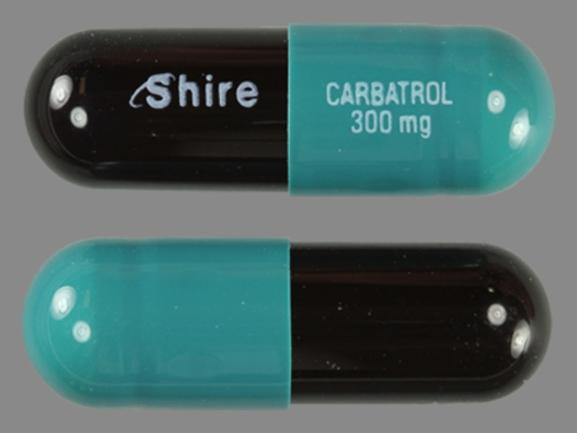Carbatrol Dosage
Generic name: CARBAMAZEPINE 100mg
Dosage form: capsule, extended release
Drug class: Dibenzazepine anticonvulsants
Medically reviewed by Drugs.com. Last updated on Jun 27, 2025.
Monitoring of blood levels has increased the efficacy and safety of anticonvulsants (see PRECAUTIONS, Laboratory Tests). Dosage should be adjusted to the needs of the individual patients. A low initial daily dosage with gradual increase is advised. As soon as adequate control is achieved, the dosage may be reduced very gradually to the minimum effective level. Carbatrol may be taken with or without food. Carbatrol capsules may be swallowed whole or may be opened and all the beads sprinkled on a teaspoon of soft food such as applesauce. Make sure all of the food and medicine mixture is swallowed. Do not crush or chew Carbatrol capsules or the sprinkled beads.
Carbatrol is an extended-release formulation for twice a day administration. When converting patients from immediate release carbamazepine to Carbatrol extended-release capsules, the same total daily mg dose of carbamazepine should be administered. Following conversion to Carbatrol, patients should be closely monitored for seizure control. Depending on the therapeutic response after conversion, the total daily dose may need to be adjusted within the recommended dosing instructions.
Epilepsy (see INDICATIONS AND USAGE)
Adults and children over 12 years of age. Initial: 200 mg twice daily. Increase at weekly intervals by adding up to 200 mg/day until the optimal response is obtained. Dosage generally should not exceed 1000 mg per day in children 12-15 years of age, and 1200 mg daily in patients above 15 years of age. Doses up to 1600 mg daily have been used in adults. Maintenance: Adjust dosage to the minimum effective level, usually 800-1200 mg daily.
Children under 12 years of age: Children taking total daily dosages of immediate-release carbamazepine of 400 mg or greater may be converted to the same total daily dosage of Carbatrol extended-release capsules, using a twice daily regimen. Ordinarily, optimal clinical response is achieved at daily doses below 35 mg/kg. If satisfactory clinical response has not been achieved, plasma levels should be measured to determine whether or not they are in the therapeutic range. No recommendation regarding the safety of Carbatrol for use at doses above 35 mg/kg/24 hours can be made.
Combination Therapy: Carbatrol may be used alone or with other anticonvulsants. When added to existing anticonvulsant therapy, the drug should be added gradually while the other anticonvulsants are maintained or gradually decreased, except phenytoin, which may have to be increased (see PRECAUTIONS, Drug Interactions).
Trigeminal Neuralgia (see INDICATIONS AND USAGE)
Initial: On the first day, start with one 200 mg capsule. This daily dose may be increased by up to 200 mg/day every 12 hours only as needed to achieve freedom from pain. Do not exceed 1200 mg daily.
Maintenance: Control of pain can be maintained in most patients with 400-800 mg daily. However, some patients may be maintained on as little as 200 mg daily, while others may require as much as 1200 mg daily. At least once every 3 months throughout the treatment period, attempts should be made to reduce the dose to the minimum effective level or even to discontinue the drug.
More about Carbatrol (carbamazepine)
- Check interactions
- Compare alternatives
- Pricing & coupons
- Reviews (14)
- Drug images
- Side effects
- During pregnancy
- Generic availability
- Drug class: dibenzazepine anticonvulsants
- Breastfeeding
- En español
Patient resources
Other brands
Tegretol, Tegretol XR, Equetro, Epitol, Carnexiv
Professional resources
Other brands
Tegretol, Equetro, Epitol, Carnexiv
Related treatment guides
See also:
Further information
Always consult your healthcare provider to ensure the information displayed on this page applies to your personal circumstances.


